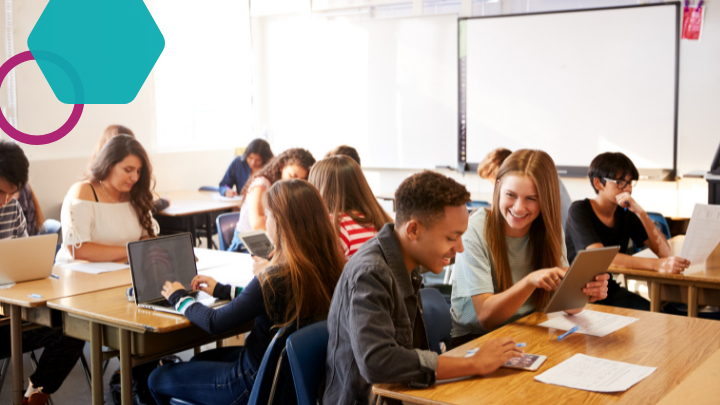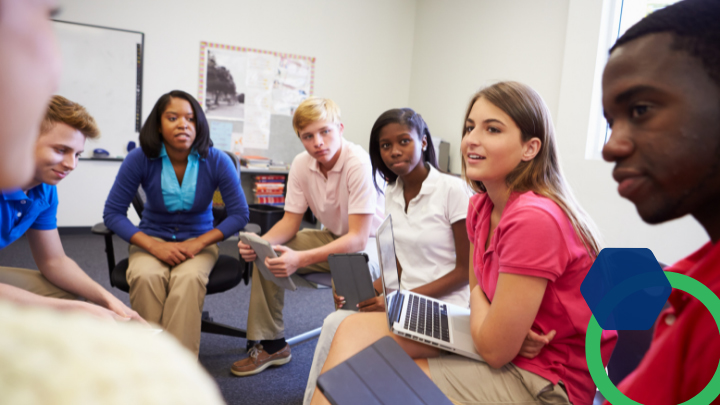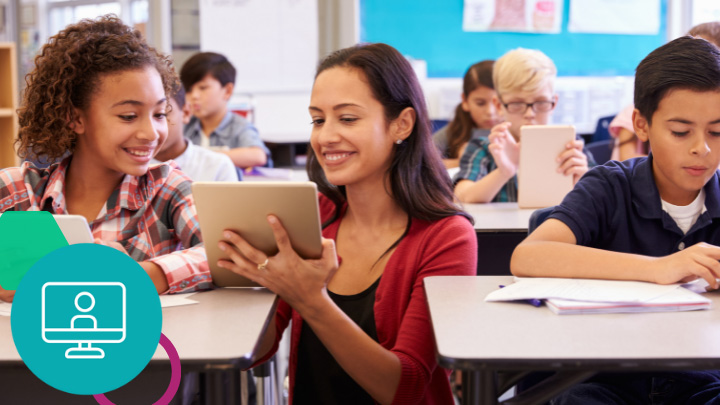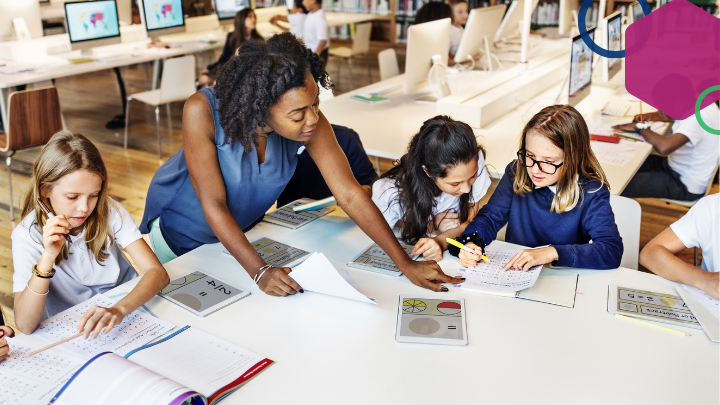“I often urge noneducators to ponder the versatility and resilience that have been asked of teachers during the pandemic. Just think about all that’s required to sustain relationships with, let alone educate, dozens of students who have been reduced to so many squares on a screen. And consider how the long-awaited transition back to actual schools presents challenges of its own.” Alfie Kohn, The Case Against Classroom Management…A Quarter Century Later.
Since March 2020, teachers’ lives have been upended in a multitude of ways. Not only were teachers asked to shift to entirely new methods of teaching, but too many had to do so in silos without any additional support from instructional coaches, education leaders, or district administrators (who were also dealing with overwhelm themselves). Even more, many teachers were given a glimpse into the turbulent at-home lives of their students which made it difficult for students to focus on academics. The pandemic magnified the systems of oppression and inequity that have pulsed throughout American society for centuries. If one thing is true, it’s that we’ve always relied on schools to provide essential services, support, shelter and care for the youngest people in our society.
I’ve learned alongside dozens of teachers as an instructional coach and program director of a Trauma Informed Specialist certification program. Some of the teachers I learn alongside have growth outcome goals in Responsive and Inclusive Practices, such as culturally responsive teaching or social and emotional learning. The purpose of these practices is to prepare students with the self-awareness, relational, and decision-making skills needed to succeed in school and in life, as well as to create inclusive environments in which all students can be seen, heard, and valued.
As teachers strive to sustainably embed these practices into their daily routines, I’ve found many of our sessions include discussions about bearing witness to the effects of the pandemic on their students’ social and emotional health. Almost always, these discussions revolve around specific, challenging and disruptive behaviors that are showing up multiple times per day across many students. Teachers feel overwhelmed, disheartened, and at a loss for how to move forward.
Thankfully, there are ways instructional coaches, principals, and education leaders can support teachers by getting curious about student behavior. When we stop to think about the “why” behind student behavior, we’re often given the gift of clarity and proactive solutions.
Try out the reframing process below to support teachers in reimagining the purpose of observing behavior:
Reframe Process: Acknowledge, Get Curious, Reimagine
Common observations from teachers usually begin with what students aren’t doing in the classroom. Examples I’ve heard this year include (but are not limited to):
- Students won’t sit still and do their work during centers
- Students talk too much with each other instead of doing independent work
- Students won’t follow directions
- Students are gossiping with their peers all the time
- Students keep crying and struggling emotionally
- Students are fighting with each other
- Students are not taking care of their things and destroying property (e.g., carving into desks)
- Students are immature
After a teacher makes an observation like the examples above, I have a process I like to use to gently reframe. Keep in mind that changes won’t happen immediately, and it’s important to provide time across multiple meetings to work towards mindset shifts.
Acknowledge the teacher’s emotion.
For example, “It can feel so frustrating when there’s so much to get done and students aren’t engaged with the work.” Allow the teacher a few minutes to share their feelings and empathetically listen. Next, invite teachers to commit to paying close attention to their body language, tone, and how they feel when dealing with challenging behaviors in the classroom next time they arise. This is an important step because when students sense their teacher is dysregulated, they often become dysregulated right alongside them. Fortunately, there are ways we can co-regulate with our students.
Get curious.
Next, invite the teacher to think about what might be going on. For example, “Can you tell me more about what the learning experience is during centers? What are your learning goals?” After the teacher has time to share, encourage continued reflection by asking “How might we” questions. These questions should support intentionally positioning yourself as a thought partner opposed to putting the “extra work” on the teacher. Using the example above about the learning experience during centers, questions might include:
- How might we design center activities so little bodies have a chance to move around?
- How might we provide students with more agency and choice during center activities?
- What would it look like if we involved students in co-creating some of the center activities each week?
Alternatively, if the behavior is hitting, interrupting, or fighting, you may encourage teachers to think about how they are reteaching community guidelines and expectations. Prompting questions might include:
- Have you explicitly discussed what your expectations look, sound, and feel like?
- Are students able to explain expectations in their own words?
- Did students help co-create the classroom guidelines? How might involving students support them in feeling invested in the classroom culture and community?
Next, encourage teachers to think about what happens before, during, and after the behavior happens. For example, if a student who struggles with reading is always getting into a fight right before you conduct a Whip Around Pass to break up reading portions of a text, their behavior might stem from embarrassment and frustration. In this case, it’s helpful to invite teachers to think about a different way for the student to participate in the learning experience in a way that feels safe and cultivates a sense of belonging (e.g., frontloading information prior to the task, allowing all students to choose if they’d like to read aloud, or reworking the task completely to include more choice).
A final but critical step is to encourage the teacher to involve the student(s) in the process of figuring out what’s going on. Resources like Collaborative and Proactive Solutions’ Drilling Cheat Sheet and Plan B Prep Sheet can help teachers facilitate difficult conversations and come to a solution collaboratively and proactively.
Reimagine solutions.
After the teacher has had the opportunity to get curious, engage them in reimagining solutions alongside their students. This takes time. Remind them that they might try something that doesn’t work, and that’s okay. Example creative and compassionate solutions for challenging behaviors include strategies such as:
- Self-awareness moments – Self Awareness Moments are a tool that helps students (and teachers) press the pause button between a challenging feeling and their first impulse.
- Creating an Inclusive Learning Environment – According to the Clover Model of Youth Development published by the PEAR institute, a sense of belonging is one of the four essential elements that people of all ages need in order to thrive, learn, and develop. It is also a fundamental part of establishing a welcoming and inclusive learning community.
- Circle Up: Community Conversations – Students often need space to discuss the issues that face them on their developmental journey as they grapple with a range of emotions, navigate peer challenges, and consider their place in the world. No matter the content area, teachers can support productive whole-class discussions by establishing a practice of Class Circles.
- Strengths-Based Instructional Practices – This strategy will help you to truly value students by shifting the focus to their strengths and how those assets can help students to develop further. Helpful questions to ask as you dig into this strategy include:
- What is present that we can build up in this student?
- What opportunities do we have with this student?
- What can this student offer their peers?
- What is this students’ unique strength, passion, or personal power?
Although this reframe is just one drop in the ocean when it comes to supporting students and teachers, it’s a powerful shift in reflection that can encourage all education personnel to take a breath and pause before leaning into the familiarity of labeling, blaming, and pathologizing student behavior. Humanizing education means we can identify with our students and understand where they are coming from. This is a step in the right direction as we create inclusive and responsive learning environments that are empowering for all students.








